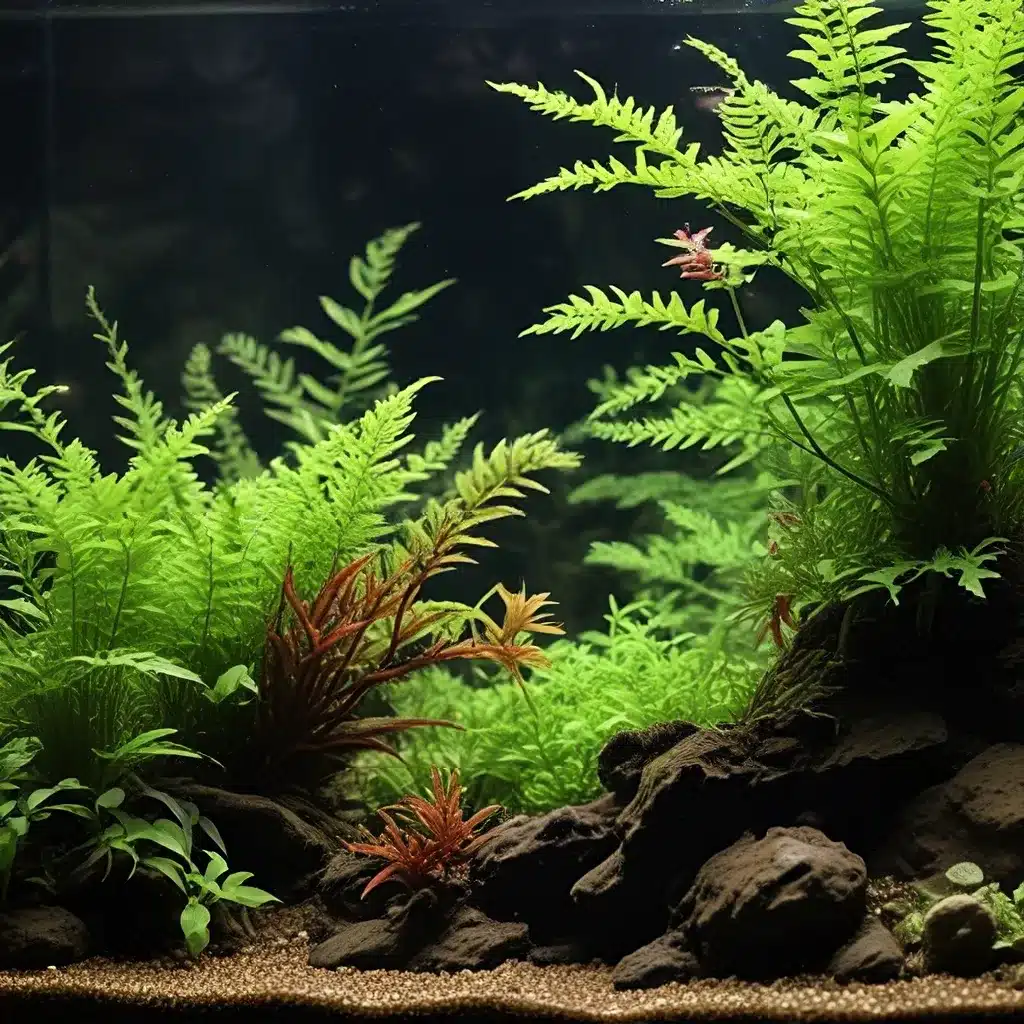
Unlocking the Secrets of Aquatic Plant-Fish Symbiosis
Aquarium enthusiasts often marvel at the intricate relationships that develop between the various inhabitants of a well-designed tank. While the captivating colors and graceful movements of the fish may initially draw our attention, the foundation of a thriving aquatic ecosystem lies in the delicate balance between the plants and their aquatic companions. In this article, we’ll delve into the symbiotic relationships that can be cultivated in your aquarium, exploring how to foster mutually beneficial interactions and create a harmonious underwater oasis.
Coral reef ecosystems provide an insightful parallel to the dynamics at play in a healthy aquarium. Much like the vibrant coral reefs, aquarium plants and fish form intricate webs of interdependence, where each component plays a vital role in supporting the overall well-being of the system. By understanding these symbiotic relationships, aquarists can optimize their tank’s environment and unlock the true potential of their aquatic community.
The Aquarium Plant-Fish Dance: A Harmonious Symbiosis
At the heart of a flourishing aquarium lies the symbiotic relationship between aquatic plants and the fish that inhabit the tank. This mutually beneficial partnership is often referred to as mutualism, where both organisms derive advantages from their coexistence.
Aquatic plants, much like their terrestrial counterparts, rely on a delicate balance of nutrients, light, and water to thrive. They act as the primary producers in the aquarium, converting carbon dioxide and inorganic compounds into the organic compounds that sustain the entire ecosystem. In return, the fish provide a steady supply of carbon dioxide and nutrient-rich waste, which the plants can then utilize for their growth and development.
This reciprocal exchange not only supports the plants’ well-being but also helps to maintain water quality. Aquatic plants absorb excess nutrients like nitrates and phosphates, which can otherwise accumulate and lead to algal blooms or other water quality issues. By removing these compounds, the plants help to keep the aquarium’s environment in balance, ensuring the fish remain healthy and vibrant.
Harnessing the Power of Aquascaping
Aquascaping, the art of designing and arranging aquatic plants and hardscapes within an aquarium, plays a crucial role in fostering these beneficial relationships. By carefully selecting and positioning plant species, aquarists can create intricate and visually stunning arrangements that mimic natural aquatic ecosystems.
Choosing the right plant species for your aquarium is a crucial first step. Different plants have varying light, nutrient, and water flow requirements, so it’s essential to match the plant selection to the specific conditions of your tank. Incorporating a diversity of plant types, such as fast-growing stem plants, slow-growing rosette plants, and floating plants, can create a more dynamic and balanced ecosystem.
Equally important is the placement and arrangement of the plants. Strategically positioning plants can create hiding spots, shelter, and breeding grounds for fish, while also ensuring adequate water circulation and light penetration. Aquascaping techniques like the Dutch style, Iwagumi, and Nature Aquarium can serve as inspiration for aquarists looking to enhance the symbiotic relationships in their tanks.
Maintaining Water Quality: The Key to Aquarium Harmony
Alongside the careful cultivation of aquatic plants, the management of water quality is paramount in sustaining a thriving aquarium ecosystem. Water parameters such as pH, temperature, and dissolved oxygen levels directly impact the health and well-being of both the plants and the fish.
By monitoring and adjusting these parameters as needed, aquarists can create an environment that supports the symbiotic relationships within the tank. For instance, maintaining appropriate levels of carbon dioxide and nutrients can ensure the plants have the resources they need to thrive, while also preventing excessive algal growth that could disrupt the delicate balance.
Investing in high-quality filtration systems is also crucial. Mechanical, biological, and chemical filtration work in tandem to remove waste, toxins, and uneaten food, keeping the water clean and oxygenated. Supplementary aeration through air stones or surface agitation can further enhance dissolved oxygen levels, benefiting both the plants and the fish.
Embracing the Unexpected: Adaptive Aquarium Management
As any experienced aquarist knows, aquarium ecosystems are not static; they are dynamic environments that require ongoing monitoring and adjustment. Embracing the concept of adaptive management is key to fostering successful symbiotic relationships in your tank.
By closely observing the behavior and condition of the plants and fish, aquarists can identify potential imbalances or issues early on and make timely interventions. This may involve adjusting lighting, modifying plant layouts, or fine-tuning water parameters to ensure the symbiotic relationships remain harmonious.
Moreover, aquarists should be prepared to experiment and adapt their approach as the ecosystem evolves. Introducing new plant species, trying alternative filtration methods, or incorporating innovative aquascaping techniques can help fine-tune the delicate balance and uncover new opportunities for symbiotic partnerships to thrive.
Fostering a Thriving Aquarium Community
Ultimately, the cultivation of symbiotic relationships in an aquarium is a journey of discovery, patience, and dedication. By understanding the intricate dance between aquatic plants and fish, aquarists can create vibrant, self-sustaining ecosystems that captivate the senses and bring a touch of nature into the home.
As you embark on your aquarium adventure, remember that King Aquarium is here to support you every step of the way. Our team of experts is dedicated to providing the knowledge, resources, and high-quality products you need to cultivate a thriving aquarium community that celebrates the wonders of aquatic life.

